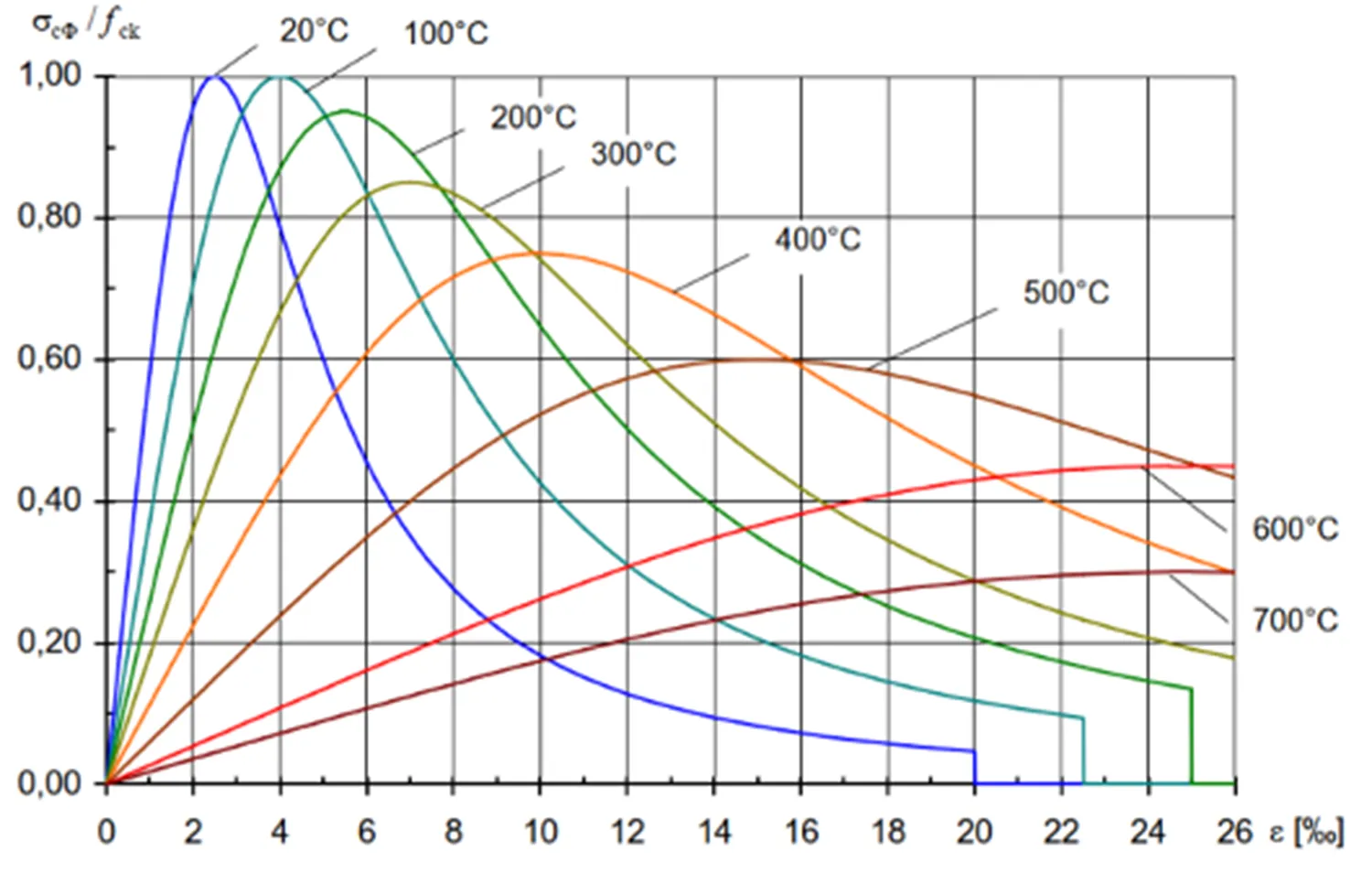Fire Protection in Underground Transport Systems
Structural considerations taking into account settlement-sensitive superstructures

Motivation
Due to the continuous development of standards and regulations, the question of a solution for complicated situations, such as the fire protection of engineering structures with regard to newly constructed as well as existing structures, has to be solved.
Since there are currently three methods for the design of underground traffic facilities for a fire event, verification level 3, which is applicable for individual boundary conditions, is examined in more detail here.
The work is intended to offer a solution approach and to clarify questions as to how an engineering structure, such as a tunnel cross-section, can be verified for a fire event from a static-constructive point of view.
Task
Fire events in underground traffic facilities can have disproportionate effects on the serviceability and load-bearing capacity of these sensitive superstructures if they are directly built over by settlement-sensitive structures (e.g. track-bound traffic routes or bridges).
The design of underground traffic facilities is principally carried out by means of a time-step calculation. Here, on the one hand, a time-dependent temperature curve (fire impact) and, on the other hand, the temperature-dependent component properties (material properties, spalling) as well as the associated stiffness distributions are taken into account.
For road tunnels, which are built as single or multi-cell frames in open construction, the ZTV-ING allows under certain conditions a simplified calculation using a linear replacement temperature gradient (between 55 K and 25 K) with full stiffness of the concrete cross-section. The DB regulations Ril 853 "Railway tunnel planning, construction and maintenance" also provided for a simplified internal force design for the case of fire for frame structures until 11/2014. Analogous to ZTV-ING, a temperature difference of 50 K was assumed for the full stiffness of the concrete cross-section. Since 11/2014, Ril 853 also requires a calculation for frame structures that takes into account fire-related effects such as spalling, temperature development over time and temperature-dependent material behaviour.
The content of the master thesis is to be a comparison of the calculation using a constant temperature gradient of 50 K and the more precise time-step calculation, related to the load-bearing capacity and the deformations of an underground structure. Against the background of the special requirements for structures with deformation-sensitive superstructures, special attention is to be paid to the calculation of deformations on the top of the structure.
Furthermore, the following consideration should be given to the conversion of existing structures: If an existing structure was not originally designed for the fire load case, a recalculation may reveal load-bearing capacity deficits. As a solution, more favourable temperature-time curves for ceiling and walls could be defined on the basis of a flue gas simulation. Within the scope of this work, a variation analysis with two further, modified temperature-time curves is to be carried out, in which the effects on the required reinforcement levels are presented and discussed.
Results
In the work, different approaches to the verification for the load case fire on a rectangular frame were carried out under consideration of different fire curves. On the one hand, a comparison of the design results between the simplified verification according to ZTV-ING, Part 5 and the more exact verification according to DIN EN 1992-1-2 was carried out.
In the calculation using the more exact calculation method, a thermal analysis was carried out in a first step to determine the temperature distribution in the respective components considered. In a second step, a mechanical analysis of the considered cross-sections was carried out. Here, an equivalent temperature gradient was derived from the resulting constraints from the temperature distribution. This was then superimposed in a load case with the decisive service load cases. In this procedure, the temperature-dependent material properties were also taken into account.
In order to obtain a comparison of the influences that the consideration of the stiffnesses has for the design, the calculation was carried out with the more precise calculation method using the ZTV-ING curve and taking into account the full and reduced stiffnesses.
Since the described approaches can lead to problems in the verification of existing structures that were not designed for the fire load case, two possible approaches were carried out using reduced fire curves (variant 1 with max. T = 600°C, variant 2 with max. T = 400°C). These two variants, in combination with the more precise calculation method, resulted in a noticeable reduction of the required reinforcement quantities.
The following essential findings resulted from the examined points:
- For the simplified verification of the load case fire, it can be said that this is on the safe side. Due to the full stiffnesses in state I, more internal forces are attracted in the respective cell in which the fire event takes place than in the consideration by means of a more exact mathematical verification.
- The approach of reduced stiffnesses in the more accurate verification method is to be followed. This is because the internal forces are more realistic than with the simplified verification method.
- The assumed spalling for the concrete without PP fibres led to partial failure of the air-side reinforcement.
- In the investigations with reduced fire curves, a clear savings potential of the reinforcement was found. The reduction in temperature resulted in lower constraints in the rectangular frame system. As a result, the stiffnesses were only slightly reduced, but the equivalent temperature gradients were significantly lower than in a design with the ZTV-ING fire curve. For existing structures, this approach with reduced fire curves is a good possibility to verify existing structures, which were not regularly designed for fire exposure, from an economic and safety point of view.
- In the investigations of the deformations, these amounted to a maximum with the simplified verification method of u = 44.7 mm, with the more precise verification (T=1200°C) to u = 45.2 mm, with the reduced fire curve of T=600°C to u = 46.3 mm and with the reduced fire curve with T=400°C to u = 46.8 mm. The location of the maximum deformations was in the fire-damaged cell in the transom in all tests.
It has turned out that the more precise mathematical verification of the load case fire is a complex calculation procedure. Depending on the different boundary conditions, considerably more differentiated calculation results can follow.
Project participants
Project management
Project management
Dr.-Ing. Grischa Dette, Ed. Züblin AG, Technical Office Berlin
Master's graduate
Dipl.-Ing. (FH) Björn Kunze
